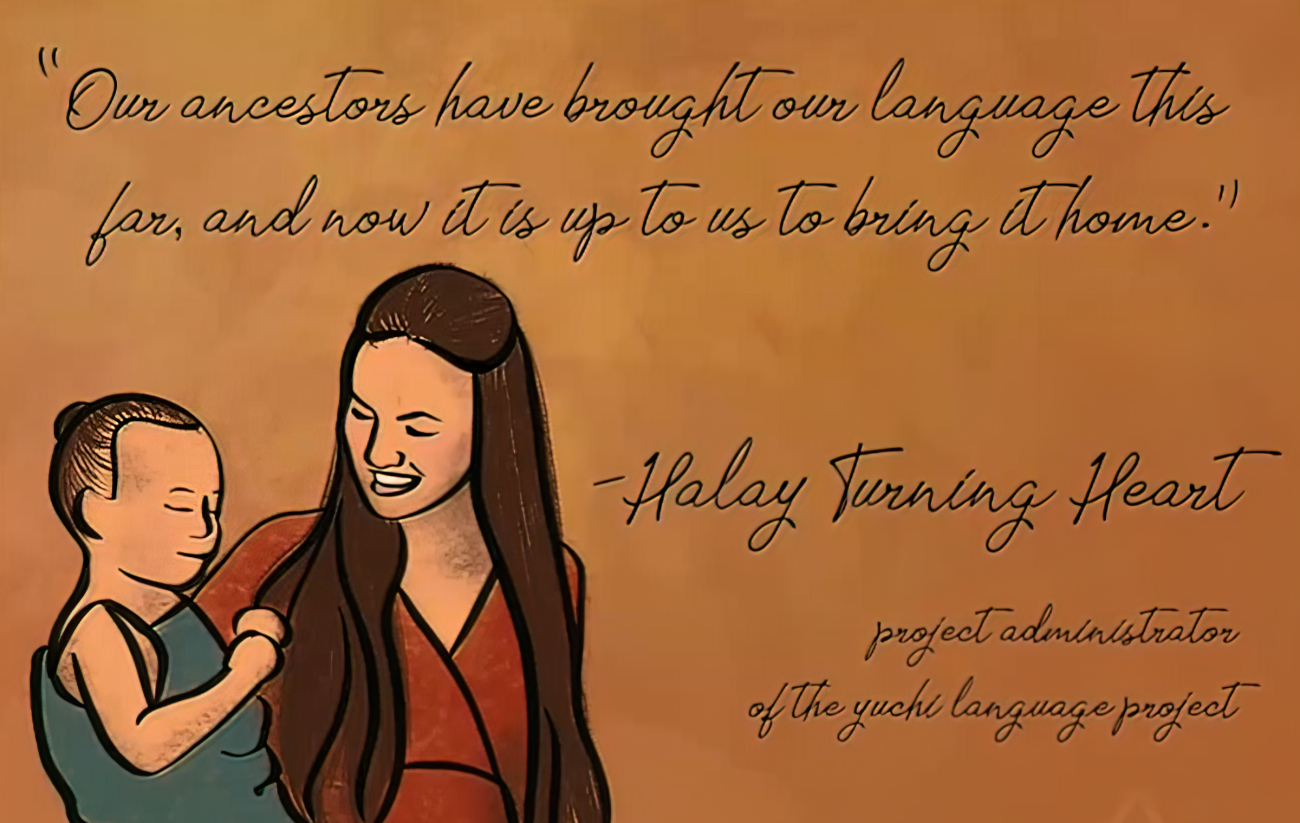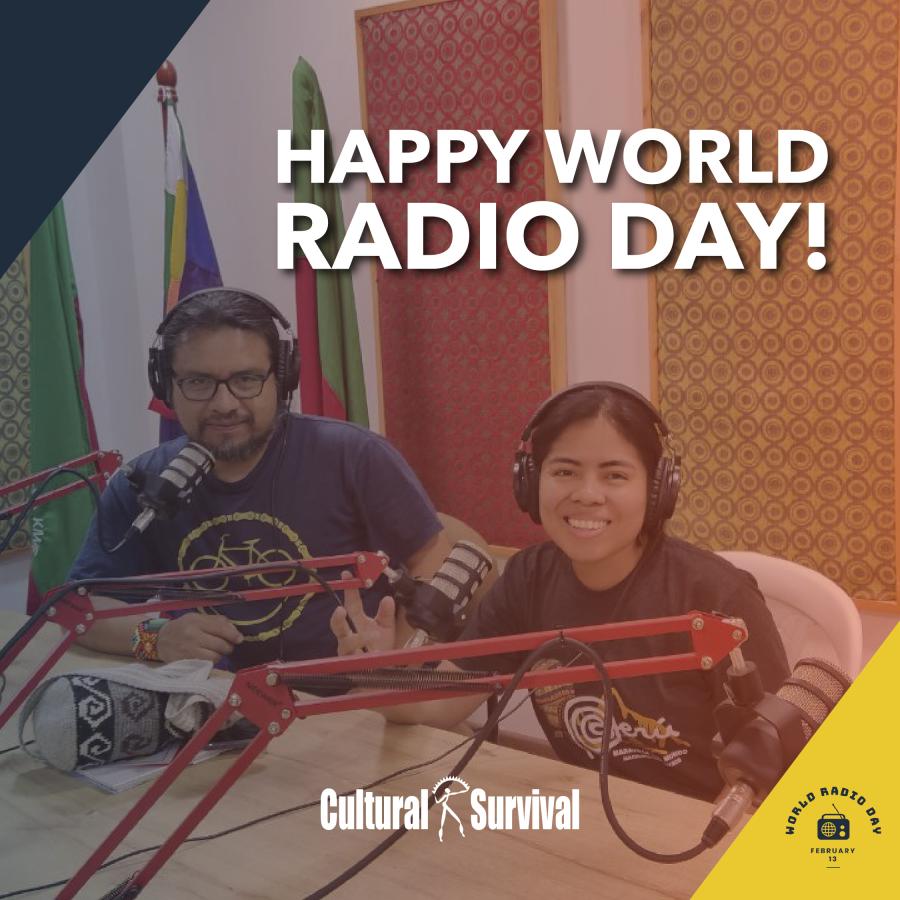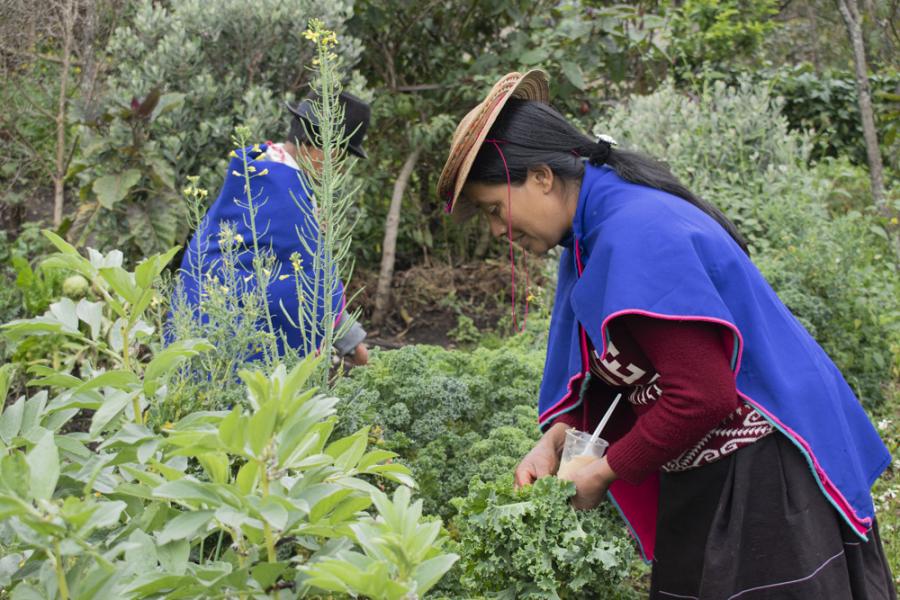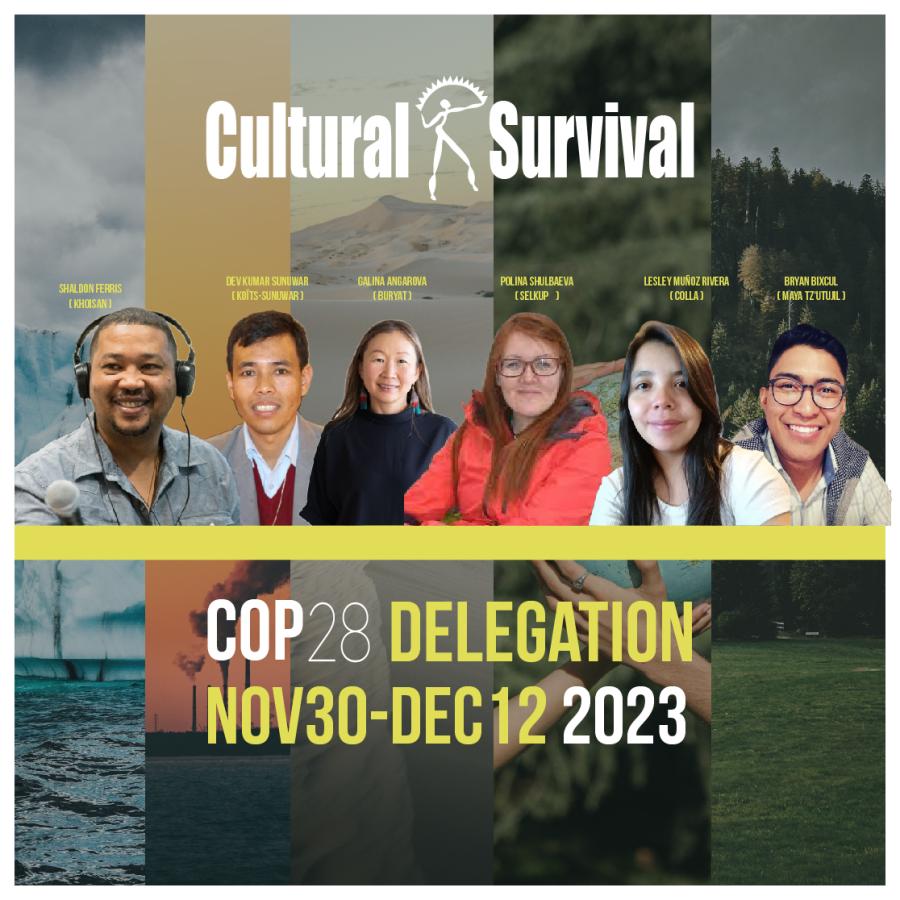
By Rebecca Kirkpatrick (CS Intern)
The final day of Cultural Survival’s virtual language conference, “Restoring and Protecting Our Native Languages and Landscapes,” on October 7, 2022, focused on the vital role that women play in the transmission of Indigenous languages to future generations and the importance of media and storytelling in the language revitalization process.
Day three began with a keynote presentation by Tarcila Rivera Zea (Quechua), Founder and President of CHIRAPAQ, on “Indigenous Women and the Power of Community Storytelling.” “In the majority of Indigenous communities,” Zea said, “women are considered the center of the family. What does it mean to be the central axis of the family? We have the role and the great responsibility to transmit the culture to our children through education, through daily education, in our own languages in our own ways.” She went on to discuss the importance of using technology in an appropriate way to aid in the language revitalization process. One example of an appropriate use of technology, Zea mentioned, is community radio, to which access is often limited or outright denied to Indigenous Peoples by the government. The importance of technology and community radio was later reiterated by Rosa Palomino (Aymara), Vice President of the Union of Aymara Women of Abya Yala, who spoke of the work she and her fellow community members do to transmit their testimonies, interviews, songs, and stories through their radio program. “The most important [thing] about language is the sharing of it, the coming together of people that you do in your small community, in raising cattle, in your gardens,” she said. “We are advancing with all of our different activities and I think that’s the most important.”
Zea’s keynote presentation was followed by the panel entitled Indigenous Women in Language Retention and Revitalization, which featured Cultural Survival’s own Director of Programs, Avexnim Cojtí (Maya K’iche’), as the moderator and Lucy Mulenkei (Maasai), Executive Director of the Indigenous Information Network; Halay Turning Heart (Yuchi, Seminole), founder of a Yuchi language immersion school at the Yuchi Language Project; Rosa Palomino (Aymara), Vanessa Farrelly (Pertame Southern Arrernte), Coordinator of the Pertame Language Revival Program; and Valentina Sovkina (Saami), Head of Kola Sami Radio, as the panelists. Following along in the same vein as Tarcila Rivera Zea’s presentation, Halay Turning Heart discussed the great responsibility she feels to pass on her language to her children. “When I became a mother, I realized I was starting an important role as a language bearer for my people,” she said. “It is an act of resistance to get up and speak to our children in our language.”
According to Vanessa Farrelly, the women in her community carry the entire Pertame language program and her grandmother is the backbone. “We’re the people who are with the kids all the time and they are the next language speakers,” Farrelly said. “Women are the future of our languages.”
“A mother is a very important person in giving that learning process to the baby, from the time they’re born to the time they’re adults,” said Lucy Mulenkei. “In Africa, we say, ‘if you educate a woman, you educate a generation, and if you educate a man you educate an individual.” Mulenkei went on to stress just how connected language is with identity and the threat that forced assimilation poses to them both.
Valentina Sovkina discussed the challenges of preserving a language that is primarily passed down orally and through intricate embroidery on clothing and hats, such as the Saami language. Creating a writing system for the Saami language was a complex process, and in the 1930s, those who attempted to do so were arrested and even killed. Sovkina found new inspiration when her grandchildren were born and began learning the language. After a year, she was able to create language courses and filmed and produced a movie that will be uploaded to YouTube. There are now 20 people learning the Saami language, and Sovkina believes conferences like this one are vital for continuing language revitalization work around the globe. “I believe that today’s conference is crucial,” Sovkina said, “and we are taking a lot on board and we will try to implement all of these takeaways from the first day, yesterday, and today. All of these insights we will take back home and preserve our language.”
Halay Turning Heart highlighted the fact that, due to the many obstacles that stand in the way of revitalizing the Yuchi language, there is a pressing need to intentionally create space to speak Yuchi. Even the simple fact of working outside the home can have an effect on language transmission. Working in an environment that requires the use of English on a daily basis allows less time for learning and practicing Yuchi. Turning Heart also acknowledged the effect that diet and health have on the language learning process. Not eating a traditional diet can cause poor health which then makes it difficult, not only to learn the language but also to have the energy to pass it on to others. Turning Heart spoke of the importance of perseverance and consistency in this work, and of the need to remember who you are and why you carry on. “Our ancestors have brought our language this far,” she said. “And now it’s up to us to bring it home.”
The conference’s fifth and final panel—moderated by Cultural Survival’s Indigenous Rights Radio Coordinator, Shaldon Ferris (Khoisan)—Media and Storytelling Promoting and Revitalizing Indigenous Languages included Socorro Cauich (Maya), a member of Radio Yúuyum in Yucatan, Mexico; Dulma Batorova (Buryat), Founder and Editor of the newspaper Nyutag Helen / Dialects; Toroga Denver Breda (Khoikhoi), language activist, writer, poet, and storyteller; and Vianna Gonzalez (Maya K'iche'), Co-founder of language revitalization project Ki'kotemal TV.
Breda spoke passionately about the effects of colonization, the erasure that Indigenous Peoples around the world have faced, and how important it is to fight to save Indigenous languages. “As First Nation communities across the world, we have been destroyed by colonizers, but we are coming back,” said Breda. “We are reclaiming and taking back and there is something so powerful in the words and our stories. First Nation people around the world are fighting a system that wants to erase us but we are standing up and saying ‘no more.’” He also spoke of the power of stories to alleviate pain and negative thoughts, and the undeniable link between traditional stories and Indigenous languages.
The ability to access these stories in Indigenous languages is crucial, not only as a means to preserve the languages but also to make information accessible to those who speak them. Socorro Cauich works for Radio Yúuyum, a community radio station that is working towards strengthening the identity of the Maya people by revaluing and encouraging the use of the language. Cauich emphasized the need for media content in Indigenous languages, saying, “We should be able to have these digital technologies in our language so we can use Twitter, Instagram, and other software in our own language… we need to fill up these spaces with content in our language so we don’t have to get content in other languages.” Vianna Gonzalez echoed this, underlining the need to create videos in Indigenous languages to increase Indigenous visibility and share information about Indigenous culture and ways of life. Digital tools like these also help make language classes more accessible and the lasting nature of digital files means language information can be stored indefinitely, helping to teach many generations to come.
Sharing stories in Indigenous languages—regardless of whether the method is community radio, videos on the internet or a newspaper such as the one Dulma Batorova founded to promote the Buryat language—is absolutely crucial to the survival of Indigenous language and culture. Content like this has the potential to change speakers’ attitudes towards the language and encourage them to embrace their own culture again. “Students do not want to learn the language because our language is not practiced and today people don’t speak the language in large cities,” Batorova said. But, having a newspaper in the language has begun to change this, shifting people’s perspective and reinforcing the value of Indigenous languages. “Citizens are no longer ashamed to speak in their own dialect and this is also thanks to our newspaper,” she stated.
As Halay Turning Heart said, it is an uphill battle to reclaim Indigenous language and identity, and the work required can be exhausting and traumatic. But it’s important to keep fighting. As Cultural Survival’s own Shaldon Ferris so eloquently stated in his closing remarks, “Let us find a space to make time for what was lost in the past. We have to acknowledge that our languages and identities were lost and now we’re in a space to fight to reclaim [them].”



